LiveKit gives developers full control of real-time video infrastructure with open-source flexibility. But it's not the only option on the market, and it may not be the best fit for every app.
If you're building live video features and evaluating your backend options, you'll want to explore what else is out there. Some platforms offer more plug-and-play video SDKs. Others provide built-in moderation, chat, or analytics.
And depending on your use case—like livestreaming, telehealth, or remote collaboration—certain providers may outperform LiveKit in reliability, scale, or ease of use.
In this guide, you'll get a side-by-side look at how LiveKit compares to top alternatives like Daily, 100ms, Twilio, Agora, and more. We'll break down pricing, key features, and platform strengths to help you choose the right video API for your team.
LiveKit Video Overview
LiveKit is an open-source platform that helps developers build real-time audio and video experiences into their apps. It offers a suite of SDKs for JavaScript, Swift, Android, Flutter, React Native, Unity, Unity WebGL, Node.js, Rust, Python, and Go, making it accessible across platforms.
Built on WebRTC, LiveKit prioritizes low latency and flexibility. Depending on your desire for control and infrastructure ownership, you can self-host or use their managed cloud offering. With features like tracking subscriptions, end-to-end encryption, and SFU architecture, it's designed to support scalable, high-quality video calls.
LiveKit is especially popular among teams that need a customizable media stack and are comfortable managing more of the infrastructure.
Advantages of LiveKit
-
Open Source, Full Control: LiveKit is MIT-licensed and built to be fully self-hostable. You get direct access to the source code, which means no black boxes, just clean, inspectable logic you can tweak to fit your app's needs.
-
Low-Latency SFU Architecture: LiveKit uses a modern SFU (Selective Forwarding Unit) design that routes video and audio streams efficiently. It supports simulcast, adaptive bitrate, and subscriber-specific track control, giving you fine-tuned performance, even at scale.
-
Flexible Deployment: You can run LiveKit anywhere—your own infrastructure, public cloud, or their managed LiveKit Cloud service. It's containerized with Docker and supports Helm for Kubernetes-based deployments, so integration with DevOps pipelines is straightforward.
-
Multi-Platform SDKs: LiveKit provides 11 developer-friendly SDKs. Each is actively maintained and supports real-time publishing, subscribing, and event handling.
-
Designed for Builders: With strong documentation, an active developer community, and a powerful API surface, LiveKit appeals to teams building complex or custom video workflows.
Drawbacks of LiveKit
-
Requires DevOps & Infra Expertise: Self-hosting LiveKit means owning the deployment, scaling, and monitoring of your media infrastructure. Even with Docker and Helm support, teams without strong DevOps experience may face a steep learning curve.
-
Feature Set Focuses on Video: LiveKit is built for real-time video and audio. It doesn't include bundled features like chat, moderation, or analytics out of the box. If your app needs those, you'll need to integrate third-party tools or build them yourself.
-
Smaller Ecosystem: Compared to more mature commercial offerings, LiveKit's community and ecosystem are still growing. While open source offers transparency, it may also mean fewer plug-and-play integrations or enterprise support options.
-
Managed Cloud Pricing Can Add Up: If you're not self-hosting, LiveKit Cloud pricing can become expensive at scale, especially if your use case involves long sessions or high concurrency.
Main LiveKit Features
LiveKit focuses on giving developers granular control over real-time video and audio.
Here are the platform's standout features:
-
SFU architecture: Built on a scalable SFU model, LiveKit supports high-quality video with lower client overhead, even in large rooms or group calls.
-
Track subscriptions: Developers can control which audio and video tracks get delivered to each participant, which is great for optimizing bandwidth and customizing user experiences.
-
Multi-platform SDKs: Native SDKs are available for 11 frameworks. All are designed to help you build production-ready apps with consistent media handling across platforms.
-
WebRTC-based: LiveKit uses WebRTC under the hood, enabling low-latency communication and modern codec support.
-
Token-based auth & webhooks: You can secure sessions using server-generated tokens and trigger real-time updates with webhooks for events like participant joins, disconnects, or track changes.
-
Self-hosted or managed: Run LiveKit on your own infrastructure for full control, or use LiveKit Cloud for easier scaling, monitoring, and deployment.
Primary LiveKit Use Cases
LiveKit is best suited for apps that need customizable, low-latency video experiences.
Common use cases include:
-
Telehealth: Build HIPAA-compliant video consultations with full control over media routing, session timing, and infrastructure.
-
Virtual collaboration tools: Power audio and video for multiplayer whiteboards, pair programming tools, or remote design sessions.
-
Live events & livestreaming: Use features like simulcast, and track subscriptions to scale interactive events or broadcasts with large audiences.
-
Online education: Enable high-quality classrooms, breakout rooms, and student-teacher interactions with flexible video layouts and controls.
-
Customer support platforms: Create real-time video help desks or onboarding flows that are deeply integrated with your app's UI and logic.
LiveKit Pricing
LiveKit offers flexible pricing based on how much control you want over your infrastructure.
Self-hosted: Free and open source (MIT license). You can run LiveKit on your own servers with no licensing costs. Ideal if you want full control and already have DevOps resources in place.
LiveKit Cloud: A managed hosting option with four pricing tiers.
-
Build: Free
- 100 concurrent participants
- 5,000 connection minutes
- 50 GB bandwidth
- 1,000 telephony minutes
-
Ship: $50/month
- 1,000 concurrent participants
- 150,000 connection minutes
- 250 GB bandwidth
- 8,000 telephony minutes
-
Scale: $500/month
- Unlimited concurrent participants
- 1.5M connection minutes
- 3 TB bandwidth
- 45,000 telephony minutes
-
Enterprise: Contact sales for pricing
What to Consider: LiveKit Versus a Competitor
When comparing LiveKit to other video providers, it's important to weigh how much flexibility you need versus how much infrastructure you want to manage. LiveKit gives you full control over your media pipeline, but that also means more responsibility for hosting, scaling, and maintaining it.
Here are a few key questions to help guide your decision:
-
Do you want full control or less infrastructure management? LiveKit is ideal if you're comfortable self-hosting and want to customize your video stack. But if you'd rather avoid managing servers, a fully managed competitor may be a better fit.
-
Is open source important to your team? LiveKit's MIT license gives you transparency and flexibility. Most competitors are closed platforms with proprietary SDKs and pricing models.
-
Do you need more than just video? LiveKit focuses on video and audio. If you need chat, moderation, push notifications, or analytics built in, other platforms may offer more bundled functionality.
-
What's your expected scale and budget? LiveKit Cloud can scale well, but pricing varies based on usage. Some competitors offer flat-rate plans or pricing optimized for specific use cases, like live streaming or webinars.
-
How quickly do you need to launch? Platforms with more prebuilt components or no-code interfaces may help you ship faster. LiveKit gives you more flexibility, but that can also mean more initial setup.
LiveKit Versus the Top 8 Alternatives
-
LiveKit vs. Daily
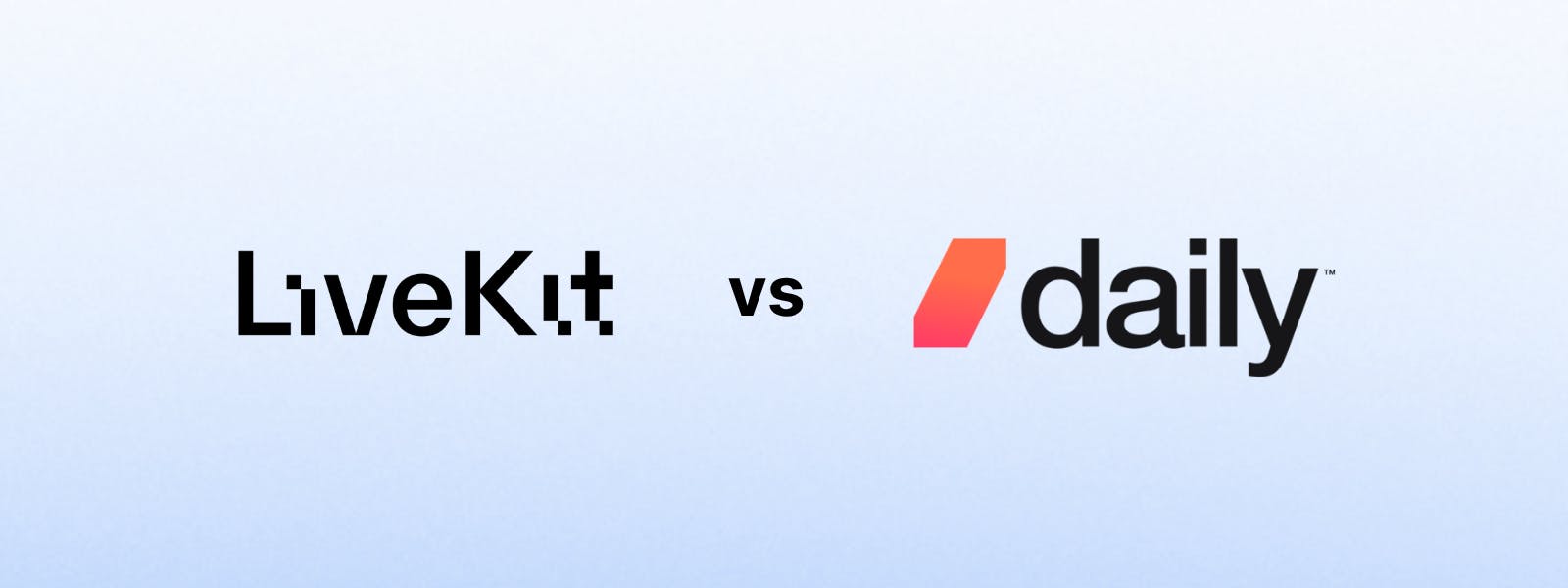
Daily is a fully managed platform for real-time video and audio. It provides APIs and SDKs for web, mobile, and even game development (via Unity), along with built-in support for screen sharing, recording, transcription, and breakout rooms.
Daily also includes prebuilt UI components to help teams get started quickly without building their own frontend logic from scratch.
Daily Versus LiveKit
Both LiveKit and Daily support core WebRTC-based video and audio capabilities, including simulcast, low-latency streaming, and cross-platform SDKs. Developers can use either platform to power calls, livestreams, or collaborative video features in a web or mobile app.
Where the two platforms differ is in hosting, customization, and deployment flexibility. LiveKit is open source and self-hostable, making it ideal for teams that want full control over their infrastructure, need to deploy on-prem, or want to avoid vendor lock-in. Daily, in contrast, is fully managed only—there's no self-hosted option—so it's better suited for teams that prioritize ease of use and don't want to manage backend services.
Daily also offers a more complete set of built-in features out of the box, including live transcription and prebuilt breakout room logic. LiveKit exposes more low-level configuration through its track subscription API, making it appealing for apps that need precise control over how video is routed or consumed.
Both platforms are developer-friendly and performance-oriented, but they serve different priorities: Daily focuses on fast integration with batteries-included features, while LiveKit emphasizes flexibility, ownership, and transparency.
Daily Pricing
Daily uses a usage-based pricing model:
-
Video and audio: $0.0015/ minute
-
Audio-only: $0.00036/ minute
-
RTMP live streaming: $0.015/ minute
-
HLS live streaming: $0.03/ minute
A free tier includes 10,000 minutes per month. Volume discounts and custom enterprise pricing are also available.
-
LiveKit vs. Dyte
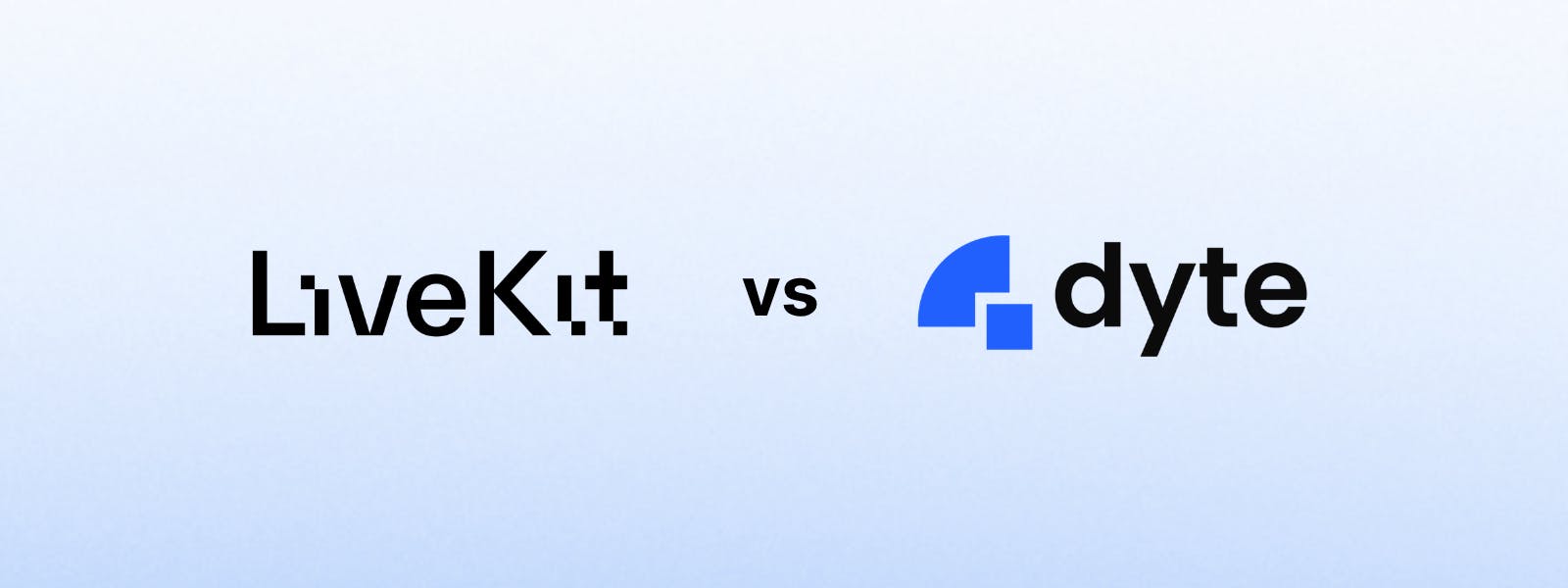
Dyte is a developer-focused video SDK that offers real-time audio, video, and screen sharing along with customizable UI components and built-in plugins. It's built to help teams quickly integrate live communication into apps with minimal setup, and it provides a range of helpful abstractions to streamline development, like prebuilt layouts, media controls, and extensible plugin architecture.
Dyte Versus LiveKit
Both Dyte and LiveKit aim to serve developers building real-time video experiences, but they take different approaches to customization and control.
Dyte is a fully managed platform, designed to help teams get started fast. It comes with out-of-the-box UI kits, built-in chat, polls, and screen sharing, plus a plugin system for extending functionality. These features make Dyte appealing for teams that want a polished user experience with minimal custom development.
LiveKit, by contrast, is open source and built for flexibility. It doesn't include a UI layer or bundled engagement tools, but gives developers full control over video routing, bandwidth optimization, and infrastructure. This makes it better suited for teams building custom media workflows, or those with strict deployment or compliance requirements, such as running in a private cloud or configuring advanced SFU behavior.
Dyte prioritizes simplicity and speed to production. LiveKit favors transparency, modularity, and self-hosting optionality. If you want to set up a full-featured video experience quickly, Dyte is likely a better fit. If you need to tailor the media stack itself, LiveKit gives you more low-level control.
Dyte Pricing
Dyte offers usage-based pricing with a free trial:
-
Free tier: 3-month trial
-
Standard plan: Starts at $0.004/min for video, and $0.001/minute for voice
-
Premium features (e.g., plugins, RTMP, advanced recording): Available on higher-tier plans
-
Enterprise: Contact sales for pricing
3. LiveKit vs. Twilio
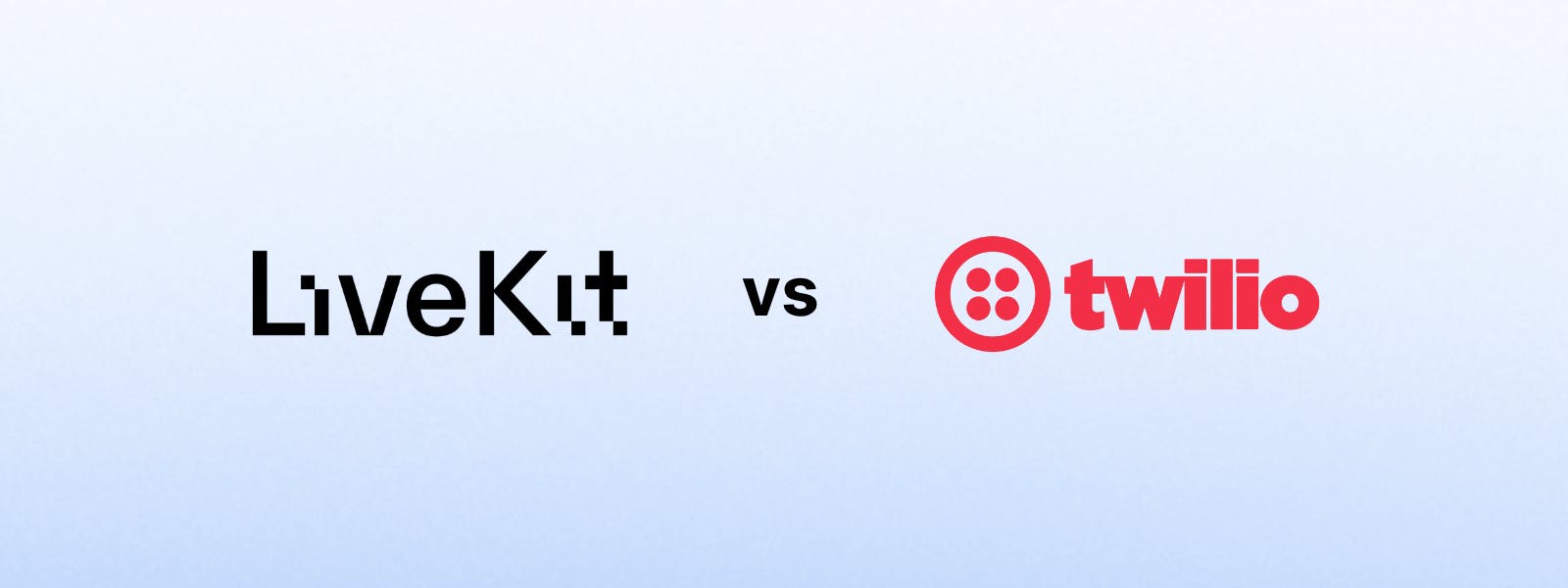
Twilio is a well-established communications platform that offers APIs for messaging, voice, and video. Twilio Video provides developers with programmable video capabilities and integrates with the broader Twilio ecosystem, including SMS, email, and authentication. It's a mature, enterprise-friendly solution with global infrastructure and deep documentation.
Twilio Versus LiveKit
Both Twilio and LiveKit give developers access to WebRTC-based video building blocks, but they target very different types of teams and workflows.
Twilio is a closed, fully managed platform designed for teams that want to integrate communication features quickly using a suite of enterprise-ready APIs. It's ideal for developers who value reliability, compliance, and extensive support, particularly when building apps that also rely on Twilio's voice, messaging, or auth products.
LiveKit, by contrast, is open source and self-hostable. It doesn't offer adjacent communications tools, but gives developers more flexibility to control media behavior and infrastructure. If your team wants to deploy in your own environment, customize SFU routing, or avoid vendor lock-in, LiveKit gives you options Twilio doesn't.
Twilio also includes client-side UI libraries and optional integrations for recording, network quality monitoring, and TURN support. LiveKit requires more manual setup for some of those features, but allows for deeper customization at the infrastructure and media layers.
Twilio's strength is enterprise scale and all-in-one communications. LiveKit's strength is open-source flexibility and infrastructure ownership.
Twilio Pricing
Twilio Video uses usage-based pricing:
-
Video API: $0.004/minute
-
Voice API: $0.0085/minute
Twilio also offers enterprise support and custom pricing for large deployments.
-
LiveKit vs. 100ms
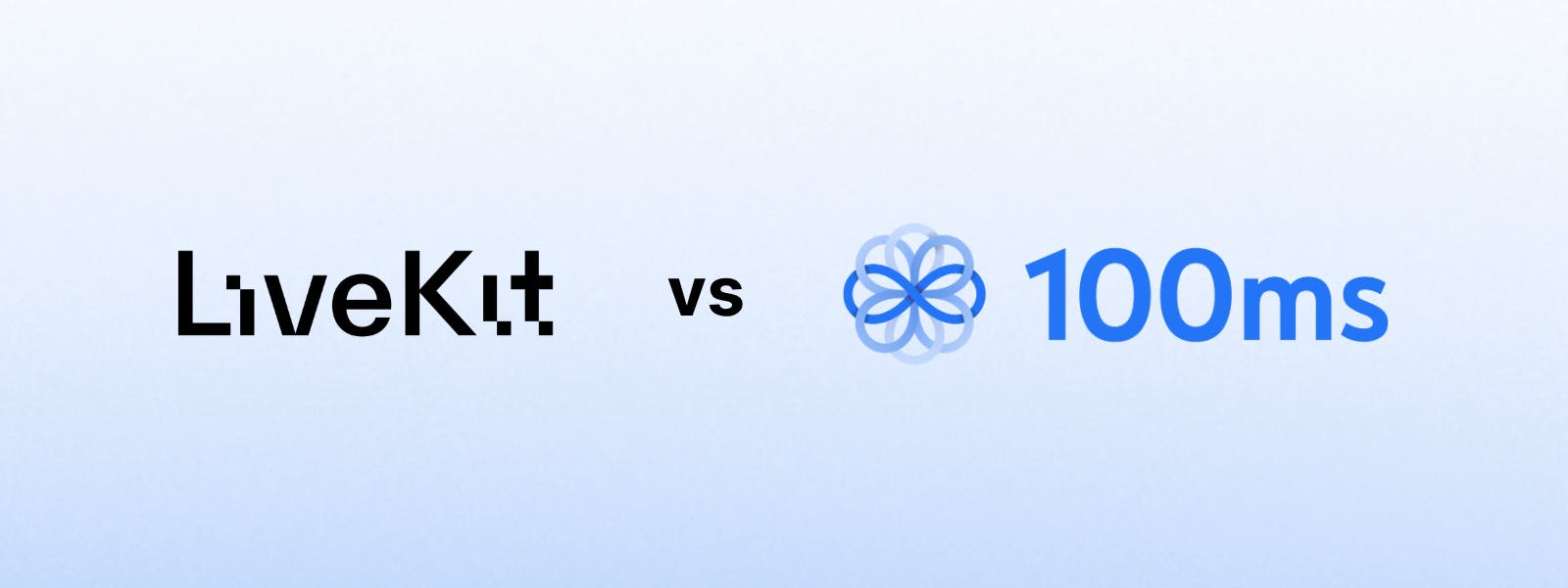
100ms is a real-time video and audio API designed for speed, reliability, and ease of integration. It comes with prebuilt components for common use cases—like livestreaming, video conferencing, and virtual events—and offers built-in features such as role-based permissions, chat, screen sharing, and cloud recording.
100ms Versus LiveKit
Both platforms are developer-centric and video-focused, but they differ significantly in philosophy and flexibility.
100ms is fully managed and includes prebuilt UI kits and media pipelines. It's great for teams who want to launch quickly without spending cycles on infrastructure. Features like active speaker detection, HLS streaming, and role-based layouts make it a strong choice for livestreaming and large-audience apps.
LiveKit doesn't offer prebuilt components, but it gives you full control over infrastructure and media flow. It's open source and self-hostable, making it ideal for teams that want to build their own frontend, customize routing logic, or deploy in private environments. While 100ms offers faster onboarding, LiveKit provides deeper flexibility and infrastructure ownership.
If your team is looking for batteries-included building blocks with minimal backend setup, 100ms is the better fit. If you want to fine-tune every aspect of how video behaves—or avoid usage-based pricing from a third-party host—LiveKit gives you more control.
100ms Pricing
100ms uses usage-based pricing with a generous free tier:
-
Free tier: 10,000 minutes (streaming and conferencing)
-
Pay-As-You-Grow: Streaming: $0.0012/ minute, and conferencing: $0.004/ minute
Custom pricing available for high-scale apps.
-
LiveKit vs. Mux
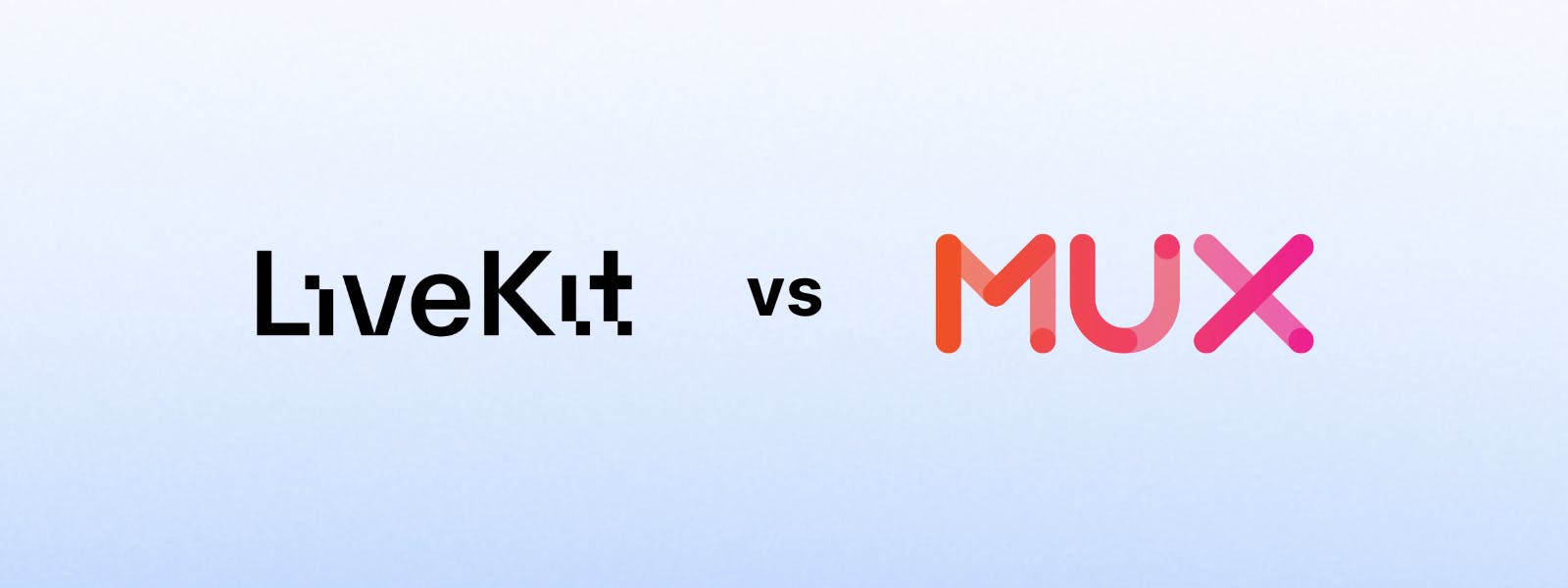
Mux is a video infrastructure platform best known for on-demand video hosting and livestreaming. It offers APIs for video upload, encoding, storage, and playback, along with real-time video features via Mux Real-Time Video (built on the acquisition of the platform Highfive). Mux emphasizes simplicity, broadcast-grade reliability, and analytics-rich playback.
Mux Versus LiveKit
While both platforms deal with video, their core focus is different.
Mux is primarily built for video-on-demand and livestream delivery. It abstracts away encoding, CDN distribution, and playback complexity—ideal for apps that need to deliver video to large audiences across devices. With the addition of Mux Real-Time Video, it now also supports low-latency video calls and conferences.
LiveKit, by contrast, is purpose-built for real-time communication. It excels in two-way video use cases like conferencing, telehealth, education, and collaboration. It doesn't handle video hosting or playback like Mux, but it does offer fine-grained control over real-time media streams.
If your app is broadcast-first or needs a hybrid of livestreaming and on-demand playback, Mux is likely the better choice. If you need highly customizable, low-latency real-time video, LiveKit gives you more control and developer flexibility.
Mux Pricing
Mux offers three pricing tiers:
-
Free: $0/month for 100,000 delivery minutes and 10 videos
-
Starter: $10/month for 100,000 delivery minutes and unlimited videos
-
Enterprise: Contact sales for pricing
The Starter plan also includes a $100 monthly usage credit.
-
LiveKit vs. Agora
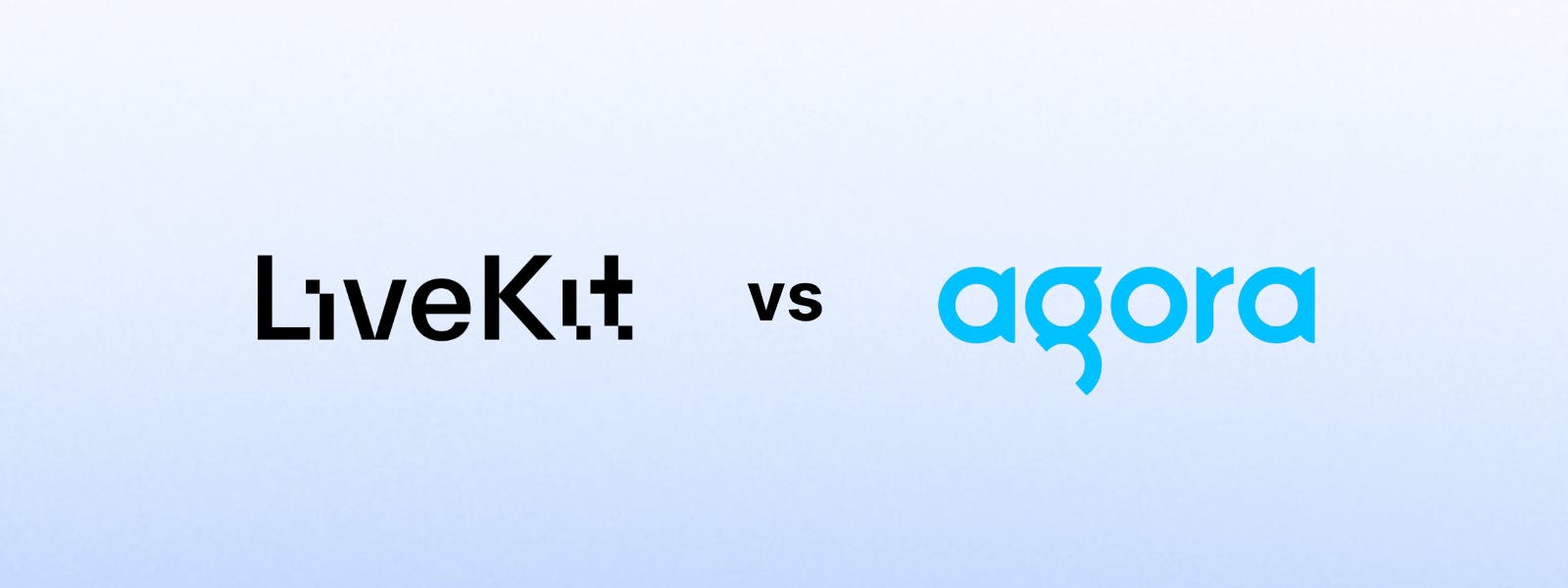
Agora is a real-time engagement platform that supports video, voice, and interactive livestreaming. It offers global infrastructure, a full-featured SDK, and a suite of engagement add-ons—including chat, whiteboarding, virtual backgrounds, and AI noise suppression. Agora is widely used in telehealth, education, gaming, and social apps where real-time performance is critical.
Agora Verus LiveKit
Both LiveKit and Agora focus on real-time video and audio, but they serve different development philosophies.
Agora is a closed, fully managed platform with a broad set of built-in capabilities. It provides low-latency global coverage through its proprietary real-time network (SD-RTN), along with cross-platform SDKs and feature-rich extensions. It's designed to help teams build engaging experiences quickly, with less concern for infrastructure complexity.
LiveKit takes the opposite approach—open source, infrastructure ownership, and fine-grained control. It's ideal for teams that want to self-host, customize their SFU behavior, or integrate real-time video into highly specialized workflows. LiveKit requires more configuration but offers total transparency into how media is routed and managed.
If you're building a global, high-scale app and need bundled engagement features out of the box, Agora is a strong choice. If you prefer to build with open standards, control deployment, and avoid vendor lock-in, LiveKit may be a better long-term fit.
Agora Pricing
Agora offers a pay-as-you-go pricing model.
-
Conversational AI Engine: $0.0265/ minute
-
Video Calling: $3.99/ per 1,000 minutes
-
Voice Calling: $0.99/ per 1,000 minutes
The first 10,000 minutes are free every month.
-
LiveKit vs. Vonage
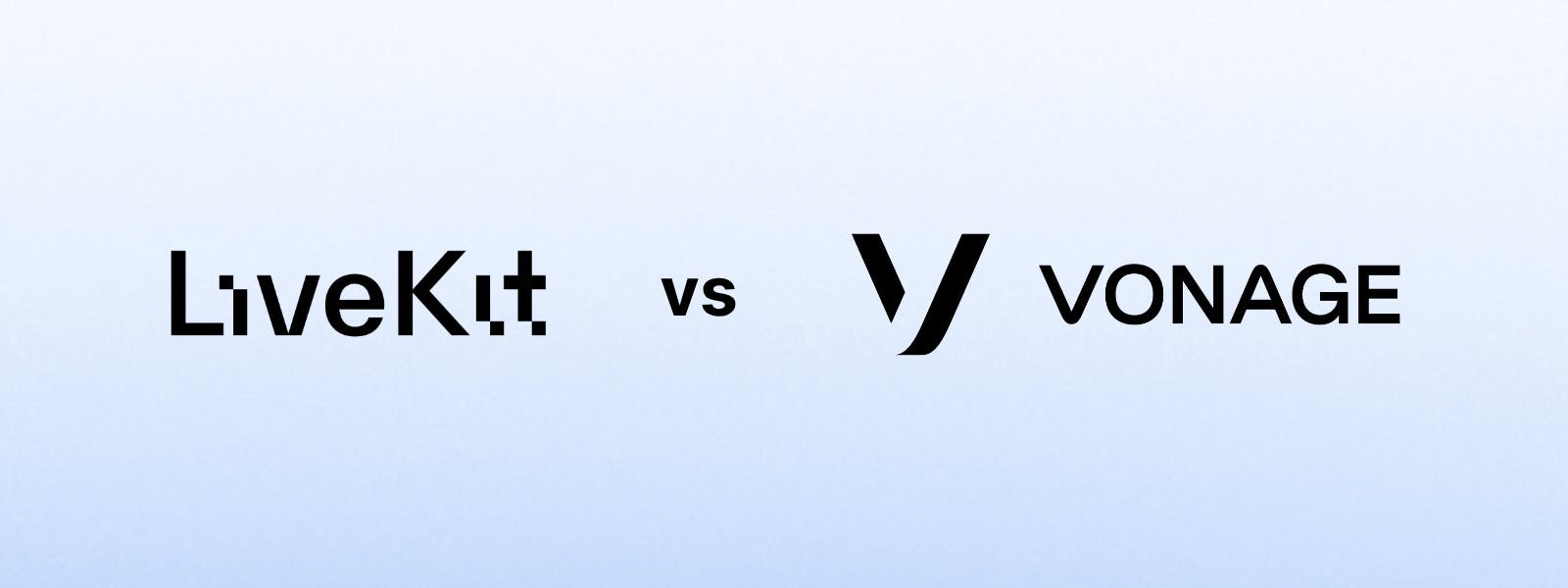
Vonage is a long-standing communications platform that offers APIs for voice, video, messaging, and phone verification. Its Video API, originally built as TokBox, enables developers to embed real-time video into web and mobile apps, with built-in support for features like recording, SIP integration, and advanced moderation.
Vonage Versus LiveKit
Both platforms offer real-time video capabilities, but they cater to different levels of flexibility and infrastructure control.
Vonage is fully managed and closed-source, making it a good fit for enterprises that want to rely on a battle-tested API for calls, conferencing, and integrations with traditional telecom infrastructure. It's especially popular for apps that combine video with SMS, phone, or voice bots—use cases where Vonage's broader suite stands out.
LiveKit, in contrast, focuses purely on real-time audio and video. It's open source, self-hostable, and built for teams that want to configure everything from bandwidth handling to media routing. While LiveKit doesn't offer telephony or omnichannel APIs, it gives developers more freedom to build performance-optimized, custom experiences on their own infrastructure.
Vonage is strong on enterprise integrations, compliance, and global scale, but its feature set is less flexible for teams who want to go beyond its predefined media workflows. LiveKit is ideal for developers who want full control over the real-time stack and the ability to run video in hybrid or private cloud environments.
Vonage Pricing
Vonage offers pay-per-use pricing:
-
Voice API: $0.01314/ minute
-
Video API: $0.00382/ minute
New users receive free trial credits.
-
LiveKit vs. Jitsi
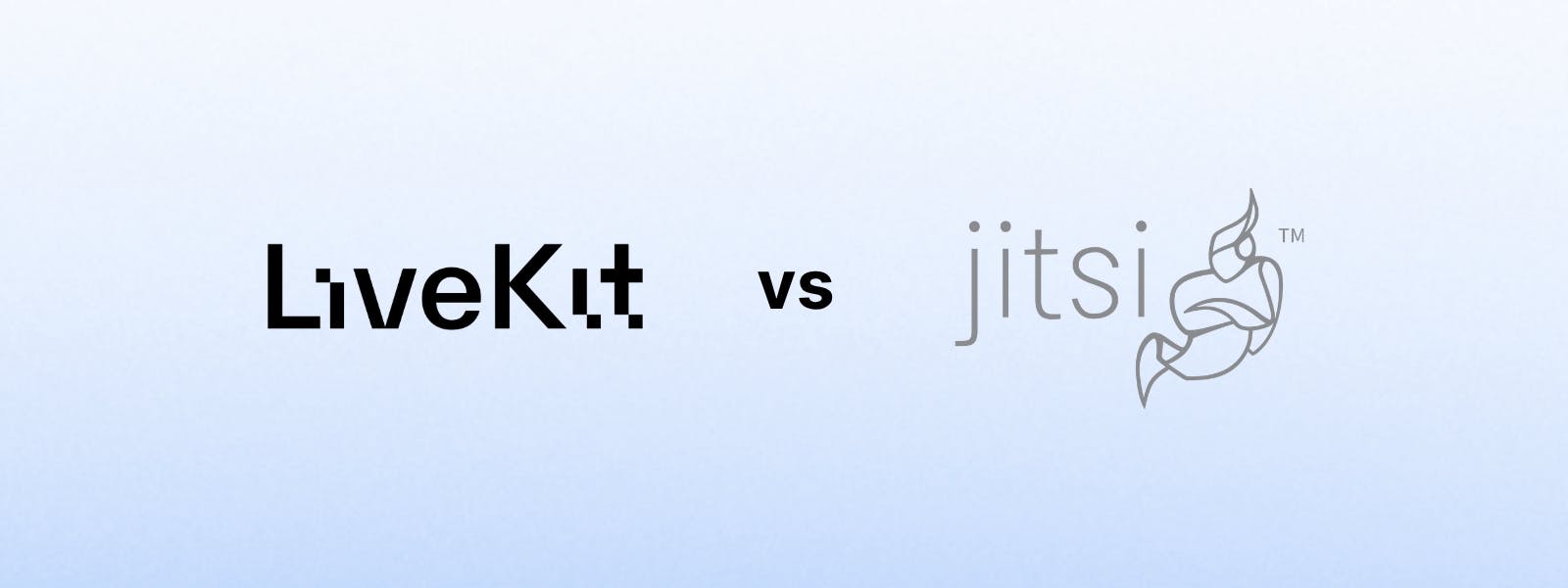
Jitsi is a free, open-source video conferencing platform that supports multiparty calls, screen sharing, and end-to-end encryption. It's widely used for quick deployments and small-scale applications, and offers both a hosted service (meet.jit.si) and self-hosted options under the Apache 2.0 license.
Jitsi Versus LiveKit
Both Jitsi and LiveKit are open source and allow for self-hosted deployments, but they serve different technical needs.
Jitsi is built as a ready-to-use video conferencing solution with a default UI and simplified setup. It's great for basic group calls and internal tools, especially when customization needs are minimal. Developers can fork the Jitsi Meet frontend or extend functionality via plugins, but the architecture is more opinionated and geared toward traditional video chat use cases.
LiveKit, on the other hand, is more modular and developer-focused. It provides SDKs without a frontend UI, letting teams build custom real-time video into their own applications. LiveKit uses a modern SFU with fine-grained track control, bandwidth optimization, and cross-platform SDKs, making it better suited for apps that need performance tuning or unique interaction models.
If you're looking for a plug-and-play video solution with limited development overhead, Jitsi is the fastest path. If you're building a video product from the ground up and need full control over how streams are published, subscribed to, and routed, LiveKit is more robust and scalable.
Jitsi Pricing
Jitsi is free to use and self-host under the Apache 2.0 license. The public instance (meet.jit.si) is free but not suitable for production apps. Self-hosted deployments require DevOps resources but offer complete ownership. Unlike most competitors, Jitsi does not have a commercial cloud offering or usage-based pricing model.
Alternatives Comparison Chart
| Platform | Open Source | Self-Hosted | Prebuilt UI | Chat / Add-ons | Best For |
|---|---|---|---|---|---|
| LiveKit | ✅ Yes (MIT) | ✅ Yes | ❌ No | ❌ No | Custom real-time video with full control |
| Daily | ❌ No | ❌ No | ✅ Yes | ❌ No (Optional integration) | Fast integration with built-in features |
| Dyte | ❌ No | ❌ No | ✅ Yes | ✅ Yes | Prebuilt UI with plugin-based extensibility |
| Twilio | ❌ No | ❌ No | ✅ Yes | ✅ Yes | Enterprise apps using video and messaging |
| 100ms | ❌ No | ❌ No | ✅ Yes | ✅ Yes | Livestreaming and role-based layouts |
| Mux | ❌ No | ❌ No | ❌ No | ❌ No | On-demand and broadcast video delivery |
| Agora | ❌ No | ❌ No | ✅ Yes | ✅ Yes | High-scale apps needing bundled tools |
| Vonage | ❌ No | ❌ No | ✅ Yes | ✅ Yes | Video with SIP/telephony integrations |
| Jitsi | ✅ Yes (Apache 2.0) | ✅ Yes | ✅ Default UI | ❌ No | Basic conferencing and internal tools |
Is LiveKit Right For You, Or Did You Find An Alternative?
If you're building a highly customized video experience and you want full control over how it works under the hood, LiveKit is one of the most flexible options available. It's open source, self-hostable, and gives developers deep access to media behavior, track routing, and infrastructure deployment.
But LiveKit isn't for everyone. If you want to launch quickly, avoid DevOps overhead, or need bundled features like chat, breakout rooms, or transcription, alternatives like Daily, Dyte, or 100ms may be a better fit. Platforms like Twilio, Agora, and Vonage also stand out if you need voice, messaging, or telecom integrations in the same stack.
Ultimately, the right choice depends on your app's technical needs, your team's infrastructure comfort, and how much control you want over the real-time layer.

